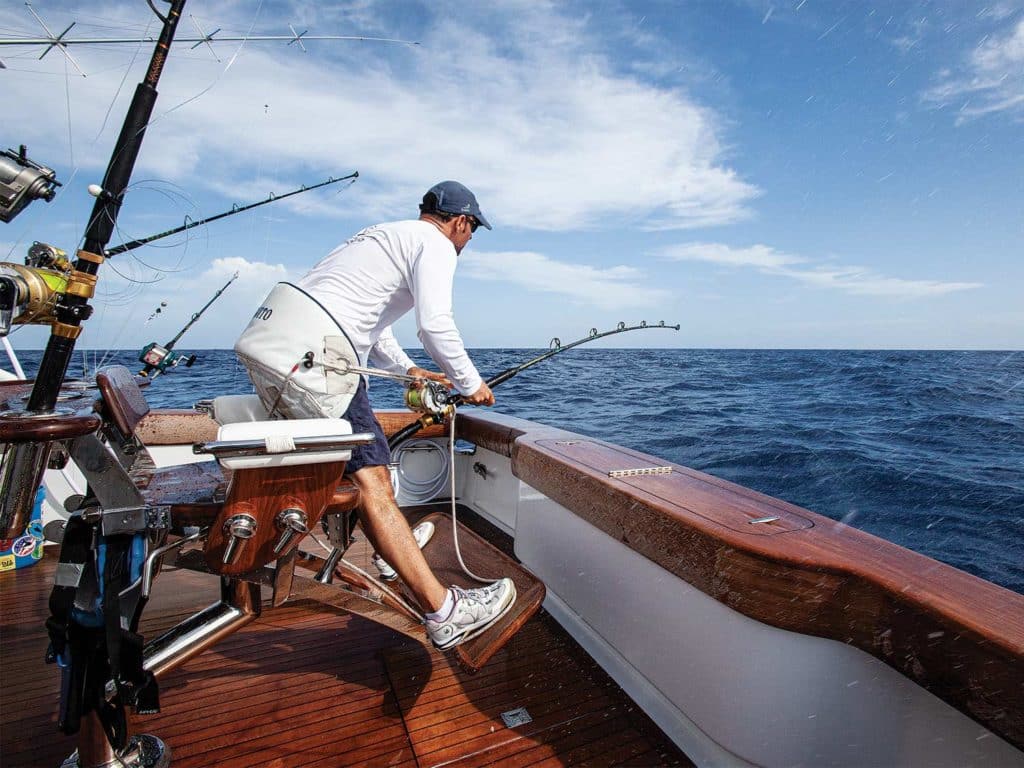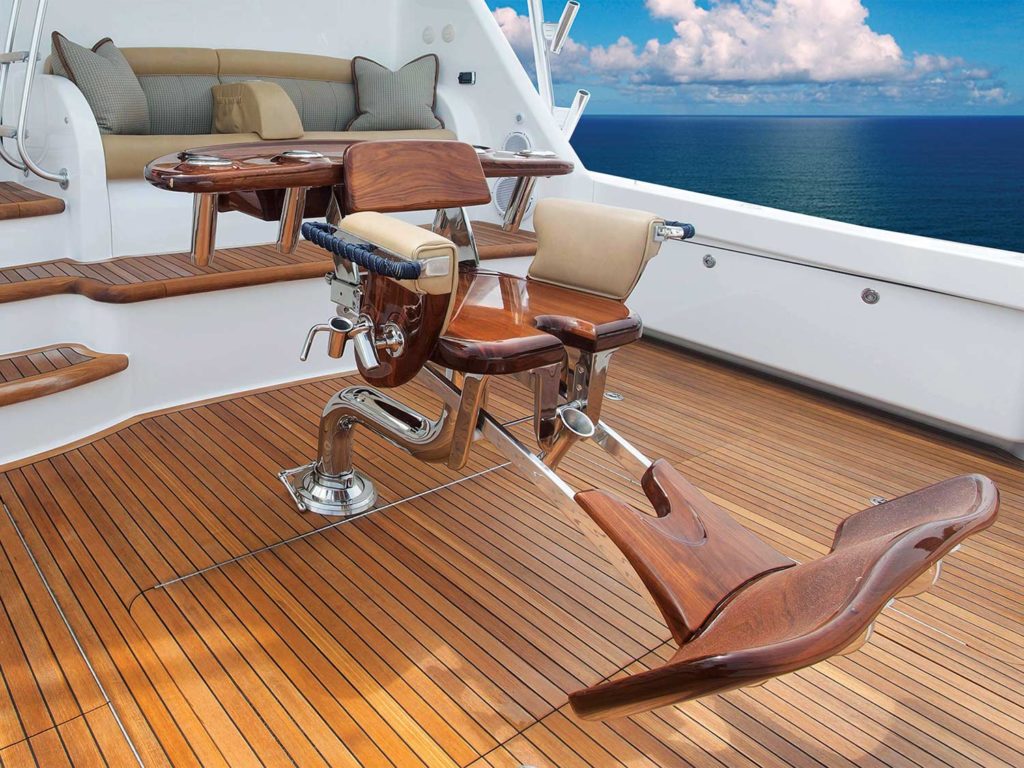
The fighting chair is one of the most commonly misused pieces of equipment in the cockpit. And in some circles, just sitting in one merely for leisure is bad luck. Every person is different, and there is no one-size-fits-all method for using a fighting chair, so it is very important that the footrest, the bucket harness and the straps be fitted to the angler before you have a fish on—because once that drag is engaged, it’s game on.
The Footrest
Every modern, quality fighting chair should be equipped with an adjustable, removable footrest. It should be adjusted so that when you are hooked up to a fish at full drag or you have reached the top of your reeling stance, you are standing with a straight leg. Your body should never be over your toes.
It isn’t wise to adjust the footrest midfight, because any time you are strapped into a harness with upwards of 30-plus-pounds of drag, you must keep your wits about you and concentrate on the task at hand. Fooling around with the footrest at this stage of the game could cause you to lose your balance.
The footrest needs to be out far enough so your body is the pivot point. Too close, and you feel like you will fall forward when the rod is loaded. This is what Sam Peters, president of Release Marine, calls “over the top”—your body is over your toes—and that’s a no-no.
Because there are more than a few moving parts when it comes to getting your heavy-tackle fight properly organized, the footrest may need to be readjusted after you factor in the bucket harness and the length of your straps.

The Bucket Harness
You must be directly connected to the rod and reel when using heavy tackle. The weight is simply too cumbersome with a 500-plus-pound animal pulling you around. Trying to use a chair without a bucket harness causes you to use your arms as you would with light tackle, and you’ll find you quickly tire from pumping the rod up and down.
This is heavy-tackle fishing with lots of drag, and the only way to get the fish boatside is to use the weight of your body—in combination with the rod—as leverage, fighting the fish with the rod and not the reel.
Some buckets are equipped with chains, some with ropes and others have nylon straps. Adjusting these straps so that you are standing with your knees locked is what keeps you comfortably attached to the fish and your rear end tight in the bucket, giving you stability. This allows you to fight the fish by leaning back to lift the rod and standing up as you wind down to gather the line.
Next, you’ll want to fine-tune the bucket straps to complete your optimum stance. Once you have determined where your footrest should be and attached the straps to the reel, have the mate load up the rod.
From here, you’ll want to adjust the straps so when the rod is fully loaded—with the rod hovering just inches above the covering board—you feel like you have complete control with your center of gravity toward the rear.
If the straps are too tight and the reel is too close to your chest, you will suddenly find yourself over the top very quickly. If the straps are too long, you’ll feel like you’re stretching too far to reel down. Once you are connected to a fish, the entire bucket assembly will stretch one-half to 1 inch, so when setting the straps, having them on the verge of being a tad tight should be perfect once put under load.
Getting to the Chair
Once the fish is on and taking drag, you will need to move the rod from the rod holder to the chair. If you are tournament fishing under International Game Fish Association rules, you must do this alone, with no help from the mates.
Be prepared for not only the weight of the rod itself but also the amount of drag on the fish. If you pull back the drag slowly—and deliberately—to a reasonable amount, then you can easily lift the rod and bring it to the chair. The best way to remove the rod from the rod holder is by going straight out, at the same angle.

There should be a safety line attached to the reel seat, so be aware of it as you move the rod to the chair. Put one leg over the gimbal and on the opposite side of the footrest, then set the rod butt in the gimbal, positioning your rear end in the bucket and your feet on the footrest. Still holding on to the rod, carefully put the strap clips on the reel and slowly reengage the drag back to strike, unless otherwise directed. Letting the captain know you are set and ready to fight the fish will keep him from guessing and backing up before you are ready.
Read Next: The Best Fighting Chairs for Your Boat
The Finer Points
Just because the mate grabs the leader doesn’t mean your job is done. As soon as he takes a wrap, back the drag off in case he has to let go. You never want the fighting drag to be engaged while the fish is on the leader—the line coming tight at full drag could rip the hook from the fish, causing it to fly back at the cockpit.
You should also be watching for any slack line or leader that could get tip-wrapped or tangled around the mate’s feet, neck or body. Reel in the slack as he wires the fish until there is nothing left to reel, or the swivel reaches the rod tip.
Having the bucket harness and the chair working together in harmony allows you to effectively fight a big fish.
At some point in your career, you’re going to get the big-fish pile-on, and when you do, you’ll be happy you have chair skills, because then the hardest part about big-game fishing is lifting the 130 from the covering board.







